1974 is an important year for the gaming hobby. It is the year that Dungeons & Dragons was introduced, the original RPG from which all other RPGs would ultimately be derived and the original RPG from which so many computer games would draw for their inspiration. It is fitting that the current owner of the game, Wizards of the Coast, released the new version, Dungeons & Dragons, Fifth Edition, in the year of the game’s fortieth anniversary. To celebrate this, Reviews from R’lyeh will be running a series of reviews from the hobby’s anniversary years, thus there will be reviews from 1974, from 1984, from 1994, and from 2004—the thirtieth, twentieth, and tenth anniversaries of the titles. These will be retrospectives, in each case an opportunity to re-appraise interesting titles and true classics decades on from the year of their original release.
—oOo—

In 1981,
Call of Cthulhu would revolutionise the roleplaying hobby, introducing the works of the Lovecraft, if not to the industry, then to the wider hobby; creating horror as a genre; making Player Characters or Investigators mortal and fragile; introducing the concept of Sanity and suffering mental damage; and more. The first supplement for
Call of Cthulhu, published the following year, was just as revolutionary.
Shadows of Yog-Sothoth: A Global Campaign to Save Mankind was the first campaign for Lovecraftian investigative roleplaying. It introduced the concept of the onionskin campaign. This has the investigators stripping away layers of information like the skin of an onion as the players progress through the campaign, revealing more of the evil cult’s plans and coming closer to the heart of the adventure. There had been campaigns before, such as
G1 Steading of the Hill Giant Chief,
G2 Glacial Rift of the Frost Giant Jarl,
G3 Hall of the Fire Giant King,
D1 Descent into the Depths of the Earth,
D3 Vault of the Drow, and
Q1 Queen of the Demonweb Pits for
Advanced Dungeons & Dragons, First Edition, which were connected and could be run as a campaign. However, each part was available separately and could readily be run independent of the others, whereas each and every chapter of
Shadows of Yog-Sothoth was integral to the plot and thus awkward to dismantle and run on their own. It was the first campaign to be set in a historical period and the first campaign to be set in a modern historical period and the first campaign to take its Player Characters around the world. In this way,
Shadows of Yog-Sothoth set the blueprint for many the
Call of Cthulhu campaigns we have had since, many of which would go on to improve upon the format, but
Shadows of Yog-Sothoth was there first.
Shadows of Yog-Sothoth: A Global Campaign to Save Mankind also introduced the first cult to Call of Cthulhu, the Lords of the Silver Twilight, whose members range from centuries old wizards to the undead. It is their aim to force the rise of the sunken city of R’lyeh under the Pacific where Dread Cthulhu has slumbered for aeons and so unleash the Great Old One upon the world and bring about the end of mankind’s dominion over the Earth. The stars though, are not yet right to bring about such a calamitous event and there is a chance that the Lords of the Silver Twilight will fail. When they discover the plans of the Lords of the Silver Twilight have for humanity and the Earth, a group of stalwart Investigators set out to thwart them, an effort which takes them to Boston to New York, then Scotland, California, Maine, and finally Easter Island and the South Pacific. In the process, they will discover dread histories and the darkest of secrets, place both their minds and their bodies in harm’s way again and again, learn things that man was always best not knowing, and ultimately, confront an alien being beyond their comprehension.
Shadows of Yog-Sothoth opens in Boston in 1928. In ‘The Hermetic Order of the Silver Twilight’, the Investigators are invited to join the eponymous and rich, well-to-do, misogynistic fraternity with a reputation for charitable works, not unlike the Freemasons. The order has several ranks though which the Investigators will quickly progress to the point when its reveals to them that in truth, its inner circle is dedicated to worshipping an unearthly god and is awaiting the time when the stars come right, and alien species can reclaim what once was theirs. The location and rituals for The Hermetic Order of the Silver Twilight are all sketched out in some detail and once they are initiated into the upper ranks, there is the constant nagging question of, “When is knowing too much just too much?” Yet as the Investigators are promoted through the ranks and exposed to unspeakable things and expected to commit increasingly despicable acts, they have the chance to learn both what the order knows and what its aims are. This includes sneaking into some of the more secret areas where they will find horrors indeed.
‘The Hermetic Order of the Silver Twilight’, the first chapter of the campaign, is detailed and rife with roleplaying possibilities combined with skulduggery and stealth. As written though it does not support that with any ease, there being no other members described other than the cultists and their acolytes, and similarly there is no real reason for the Investigators to join The Hermetic Order of the Silver Twilight except as a means to begin the plot. This despite the fact that Shadows of Yog-Sothoth is intended for fairly experienced Investigators. Shadows of Yog-Sothoth, Second Edition, published in 2004, addressed some of these issues, but not all. It is easy to be underwhelmed by ‘The Hermetic Order of the Silver Twilight’, but set-up and the plot definitely has possibilities. They just await the hand of a good Keeper to really fillet them out.
After the Investigators have learned all that they dare and fled the headquarters of The Hermetic Order of the Silver Twilight, they receive the first of several letters which will alert them to strange events around the world. This is a device that the campaign will use again and again, typically letters which draw their attention to something which turns out to be connected to the main plot, but does not look like it first. This is one of the major complaints about the campaign, that the use of letters as a narrative device is clumsy and clichéd. In hindsight this is undeniably true, but at the time of publication this was not the case.
The second scenario, ‘Look to the Future’, is a radical departure from the rest of the campaign, a piece of weird Science Fiction which takes the Investigators to New York where they will infiltrate an odd self-help and self-actualisation organisation. The Investigators are easily able to attend a meeting which is held in an oddly bare bunker-like building. In return for ready donations of money and unaware donations of Power—at this point in Call of Cthulhu’s rules, magic is fuelled by raw Power rather than Magic Points—at regular ceremonies, attendees are rewarded with small items of advanced technology, such as disposable lighters, digital watches, and non-stick frying pans. In addition, there is strange technology in the basement if the Investigators can gain access. Meddle too much and there is the possibility that one or more of their number will be killed, to the point that there is the possibility of all of them being killed. Even if they do not, they should find further links to the activities of the Hermetic Order of the Silver Twilight and its masters, but the scenario leaves a lot for the Keeper to develop if the Investigators want to explore beyond the walls of Look to the Future’s bunker. Curiously, this scenario involves Nyarlathotep, here indicating for the first time the involvement of the Crawling Chaos in the numerous machinations of those involved in the Mythos and other scenarios and campaigns for Call of Cthulhu. This is despite the fact that the campaign is called Shadows of Yog-Sothoth and famously Yog-Sothoth appears nowhere in the campaign.
More letters direct the Investigators to Scotland to check upon one Henry Hancock, renowned big game hunter and local amateur archaeologist. ‘The Coven of Cannich’ is a sprawling sandbox populated by numerous masters and mistresses of the Mythos as factions from the Lords of the Silver Twilight search for parts of an artefact believed to be buried in an ancient temple on the shores of Loch Mullardoch. These are not the only Mythos forces in the area, and there seems to be a medley of them, most far too powerful for the Investigators to face. The scenario is very much one of who the Investigators can trust from among the NPCs, and the difficulty is that because there are some twenty of them, the Keeper just has too many to handle and make them stand out from each other. There is potential to camp this up a bit a la Hammer Horror, what with the screeching ghost and the accents of the locals, but ‘The Coven of Cannich’ is a difficult scenario to run and prepare, and there is little in the way of advice for the Keeper.
Back in the U.S.A., the Investigators are hired by a Hollywood movie mogul to investigate a supposedly ‘haunted’ film set out in the Mojave Desert after the film was shut down, the director committed suicide, and the lead actor, all but a vagrant. Again, as a scenario, ‘Devil’s Canyon’, feels unconnected to the campaign as a whole, but again the Investigators will find what also seem like coincidental links. Yet there is some fun investigation to conduct in Hollywood before the Investigators set out the eponymously named Devil’s Canyon. There they find the ruined set of what would have been an epic film. After the bucolic highlands of Scotland and the city streets of Boston and New York, there is a sense of space, sunlit and dry, in this scenario’s desert setting, but even with that feeling of openness the Investigators quickly find themselves trapped and stalked by invisible things. Their invisibility is balanced by their cowardice and if they can harness the technology available, the Investigators might be able to reveal what they are. Where the Mythos and the monsters are overdone in the other scenarios, here they are restrained and creepy, and the scenario really benefits from that. However, the scenario does not add much to the overall campaign, and it comes across as a diversion rather than essential to the plot.
The campaign then takes a turn for the worse for the Investigators in ‘The Worm that Walks’. They are offered further clues, even patronage and respite, by one Christopher Edwin, but in following them up, they face increasingly nasty dangers—a family of cannibalistic backwoodsmen, an attack by a shoggoth whilst they are aboard their new patron’s yacht, and then when one of them is poisoned, stalked by something in the hospital. By the time it gets to that point, the likelihood is that the Investigators do not trust him—even if they ever did given the typical player sense of paranoia—and they have every reason not to. Edwin is out to kill them as part of the Lords of the Silver Twilight’s revenge upon the Investigators, and whilst that is understandable, to come at a point so late in the campaign when there is the possibility again of all the Investigators being killed, in what is already a campaign a deadly campaign designed for experienced Investigators, is well, overkill.
Penultimately, the campaign switches from reactive mode to proactive mode as it nears its climax. Up until now the Investigators have been reacting to letters received, but now they have the chance to begin moving against the cult, in ‘The Watchers of Easter Island’ and then in ‘Rise of R’lyeh’, the last two parts of the campaign. In the first, ‘The Watchers of Easter Island’, they travel to Easter Island, which during the period when Shadows of Yog-Sothoth is set, is a colony of Chile and under military rule. If the Investigators can make contact with the indigenous islanders and the survivors of an archaeological team, all of whom have suffered attacks and disappearances. There is something strange going on and the island is under martial law, the local commandant curious as to the reason for the Investigators’ visit and wanting to be kept aware of their activities. The indigenous islanders will guide the Investigators to a local, elderly priest who can advise and suggest the cause, and even equip them to fight the fearsome figure responsible for the disappearances. Getting to both priest and threat is physically gruelling and the end confrontation is challenging. ‘The Watchers of Easter Island’ does feel superfluous to the campaign itself. If they fail, the Investigators will be attacked on their voyage to R’lyeh at the beginning of the next chapter, but otherwise, the Investigators’ success or failure in preventing the final preparations being conducted by a Lord of the Silver Twilight have little effect on the campaign’s climax.
At last, in ‘The Rise of R’lyeh’, the efforts of the Lords of the Silver Twilight and their acolytes come to fruition and the island of R’lyeh rises out of the south Pacific, and they attempt to call Dread Cthulhu from his slumber. By this time, the Investigators should be armed with the artefacts they found during their investigations in the previous scenarios, and have the means to reverse the ritual that the Lords of the Silver Twilight want to perform, and so sink the island. It is a very short scenario, but a fitting one, as the Investigators race across the island to find a non-Euclidean vantage point from which to perform their reverse ritual. There is that moment of course, when they will have to witness Great Cthulhu easing himself out of his tomb and wading through the flotilla of boats carrying his worshippers, a moment worthy of legend that will tear at the Investigators’ sanity, after which the survivors must flee back across the island to their boat, and hopefully get away in safety. As momentous as this actually is, it does feel as if the Investigators are doing everything from the wings of the stage and so slightly anti-climactic.
In addition, Shadows of Yog-Sothoth includes two extra scenarios. The first, ‘People of the Monolith’ is based on the short story, ‘The Black Stone’ by Robert E. Howard and reads more like a short story than a scenario. The Investigators are hired by a publisher to travel to Hungary to look into the circumstances behind a piece of poetry and the poet’s subsequent suicide. The scenario is short and very little actually happens, although it is not without its strangeness. Written as a beginning scenario, it is suited to less action-orientated Investigators, and it works with fewer Investigators rather than more.
The second scenario is ‘The Warren’. This takes place in Boston and focuses upon the Boucher estate, long abandoned and now purchased for demolition and redevelopment. When the demolition expert goes missing the Investigators are hired to look into what has happened at the estate. What they discover inside the house is that the Boucher family never died out, but rather degenerated and became inbred, worshipping the Great Old Ones. Despite there being a decent bit of research to do beforehand, ‘The Warren’ all too soon descends into a location-based, dungeon style adventure. Nowhere near as bad as scenarios which would appear in the pages of the anthologies, The Asylum & Other Tales and Curse of the Chthonians: Four Odysseys Into Deadly Intrigue, but not something that would be done today or indeed since they were published. Despite the investigative efforts made before exploring the Boucher estate, the Investigators are unlikely to full prepared for the true threat at the heart of the scenario and the choice of the Great Old One feels ill-suited to the role here just as much as this type of scenario, whilst Lovecraftian, feels ill-suited to Lovecraftian investigative roleplaying.
Physically, Shadows of Yog-Sothoth is well presented and actually decently written for a campaign published in 1982. The organisation of the material leaves a lot to be desired and a lot for the potential Keeper to work through and prepare. The cover is a glorious depiction of R’lyeh and the pen and ink illustrations, all by Tom Sullivan, are all suitably dark and oppressive, and the maps have a certain charm. By the modern standards, the handouts are plain, but they are serviceable.
—oOo—
Following its publication in 1982, Shadows of Yog-Sothoth was reviewed in Space Gamer Number 60 (February 1983) in the ‘Capsule Reviews’ section by William A. Barton, the designer of Cthulhu by Gaslight. He identified that several of the scenarios are “almost too deadly”, but concluded that, “Overall, though, SHADOWS OF YOG-SOTHOTH should provide some exciting CoC play for even the most experienced investigators (despite the odd fact that Yog-Sothoth never makes an appearance, title or not), and I recommend it to all Lovecraftians.”
Shadows of Yog-Sothoth was reviewed not once, but twice in Dragon magazine. First, in Dragon #81 (Vol. VIII, No. 7, January 1984) in ‘Gaming without heroes: Horror role-playing gets its vigor from victims’ by Ken Rolston. From the start he highlighted issues with the campaign: “In design, each of the seven linked scenarios is a mystery, complete with clues, NPCs, and settings. However, for smooth presentation, considerable study and preparation by the GM will be necessary. The scenarios lack strict linear narratives. Though this avoids arbitrary limits on player freedom, it forces the GM to structure the adventures in response to the actions of the players — a difficult job even for experienced gamemasters. The-tactics of the antagonists are not adequately detailed, and will need to be improvised or planned ahead.” Ultimately, he was far more positive in his conclusion, saying that, “Yog-Sothoth requires much labor and study on the part of the GM; it is not usable after a single reading. The GM will have to provide most of the narrative structure for the campaign, since the players have much freedom to choose their own approach to solving problems. The writing and editing are generally superior. Player materials are provided in ample quantity and the text is adequately organized for GM reference. The adventures are unusual and the atmosphere exotic and terrifying. Yog-Sothoth is a classic example of role-playing horror, with awesome monsters, desperate victims, and an atmosphere of mystery and menace. Since it provides enough material for a campaign of several months’ duration, it is an excellent value for the $10 purchase.”
The campaign was then reviewed six years later in Dragon #81 (Vol. XV, No. 1, June 1990) in ‘Role-playing Reviews: A losing war against the forces of darkness’ by Jim Bambra. This was as part of the Cthulhu Classics anthology, which reprinted Shadows of Yog-Sothoth along with ‘The Warren’, but not ‘People of the Monolith’, alongside ‘The Pits of Bendal-Dolum’ and ‘The Temple of the Moon’ from Terror from the Stars; ‘Dark Carnival’ from Curse of the Chthonians; and ‘The Secret of Castrenegro’ from Cthulhu Companion. Bambra was positive in his summation, stating, “The horror elements are well presented, and the adventures span a wide variety of locations and investigative approaches. Opportunities for role-playing, investigation, and combat abound with nameless horrors and the depraved cultists who worship the creatures of darkness.”
Ian Bailey reviewed Shadows of Yog-Sothoth in ‘Open Box’ in White Dwarf #44 (August, 1983). Before awarding it ten out of ten, he said, “All in all the Shadows of Yog-Sothoth is an excellent and masterly campaign that demands a high standard of play throughout. It is well presented (one feature is five pages of player-information which can be photocopied or pulled out to save the Keeper time) and carefully managed throughout, and it provides, I believe, the most exciting and satisfying adventure available on the market to date. It might seem expensive but it is worth every penny.”
Anders Swenson reviewed the campaign in ‘Game Reviews’ in Different Worlds Issue 34 (May/June 1984). He highlighted the deadliness of the campaign saying that, “…[M]any of the scenarios would seem to work better with relatively well-equipped adventurers who have gotten access to heavy military weapons…” as well its organisation, complaining that, “Then there is the organization. Each scenario does contain the material needed to run the adventure, but finding it and having it handy is another question. Many of the scenarios have a lot of nonplayer characters, situations, maps, etc., and the tendency of the layout people was to string them together without enough introductory, transitional, and connective next to make everything findable.” As with other reviewers, he ended on a positive note with, “Overall, though, this is an excellent collection of first-rate Call Of Cthulhu scenarios. All keepers (gamemasters) should get Shadows of Yog-Sothoth.”
—oOo—
When it was first published in 1982, Shadows of Yog-Sothoth was like nothing that had come before. It was a whole campaign, consisting of several linked parts, each integral to the whole and the flow of the campaign’s story. It was set in a modern age and it was a first horror campaign, and it pitted the Investigators against H.P. Lovecraft’s signature creature, the Great Old One, Cthulhu himself. That is one thing that no campaign has done since. It is this version that would be reprinted as part of the Call of Cthulhu Classic Kickstarter campaign to celebrate the fortieth anniversary of Call of Cthulhu. It is also this version which would be reprinted as part of Cthulhu Classics in 1989.
Yet for all its scope and grandeur, Shadows of Yog-Sothoth suffers, by modern standards, numerous flaws—and those flaws are well known. They include an underwhelming set-up which challenges the Keeper to involve her players and their Investigators in the campaign. The links between the chapters are flimsy, awkward, and repetitive, and the constant use of the letter as a plot device is wearisome. ‘The Worm that Walks’, the fifth scenario, has a well-deserved reputation as a killer, an intentional method of murdering one Investigator after another at a point in the campaign when their knowledge and experience are needed for the last two scenarios. The campaign also lacks advice for the Keeper and having been written by different hands, it has a rough, incohesive feel.
It is possible that some or all of these issues could have been addressed by the planned development of a longer, more extensive, and greater world-spanning version of the campaign which would have been edited by Scott David Aniolowski. This would have included far more of locations visited in Lovecraft’s ‘The Call of Cthulhu’, the story which directly inspired Shadows of Yog-Sothoth, including Greenland, China, Germany, New Orleans, Kingsport, Saudi Arabia, Irem, San Francisco, and Xoth. Unfortunately, due to time constraints, this expanded version of the campaign was cancelled and Shadows of Yog-Sothoth, Second Edition was published instead. It should be noted that some of content of ‘The Call of Cthulhu’ has been presented for Call of Cthulhu, Seventh Edition in Cults of Cthulhu.
Some of these problems were addressed in Shadows of Yog-Sothoth, Second Edition, published in 2004. They included reasons and motivations for the Investigators to join the Hermetic Order of the Silver Twilight in ‘The Hermetic Order of the Silver Twilight’, as well as NPCs beyond the Cultists which they could interact with. The links between the chapters were listed and made more obvious and some advice was provided for the Keeper, although all too often, not enough. Whether the version from 1982 or 2004, Shadows of Yog-Sothoth cannot fail to show its age and whilst as it should, it presents a huge challenge to the players and their Investigators, it also presents an enormous challenge to the Keeper who wants to run the campaign. There is so much to prepare in the campaign and Shadows of Yog-Sothoth never makes it easy. Certainly, within two years, there would be campaigns from Chaosium, Inc, beginning with The Fungi from Yuggoth and Masks of Nyarlathotep, the latter often regarded as the greatest roleplaying campaign ever published, which made incredible strides in campaign design and presentation. There is no denying that Shadows of Yog-Sothoth needs a rewrite and even a redesign and hopefully its third edition will be the rewrite and the redesign it needs and addresses its issues.
Shadows of Yog-Sothoth: A Global Campaign to Save Mankind broke new ground in so many ways, but it is no masterpiece. It is flawed and often incoherent, and it remains a daunting prospect for any Keeper who sets out to run it for her players. Yet it has many fine moments of horror and creepiness, and above all, it has ambition, and it has a grandeur and it does something no other campaign has done since, which is have the Investigators face Cthulhu himself.
 Making my way through various Pathfinder books this one caught my eye a while back.
Making my way through various Pathfinder books this one caught my eye a while back. 






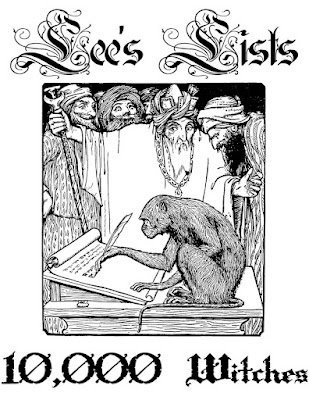

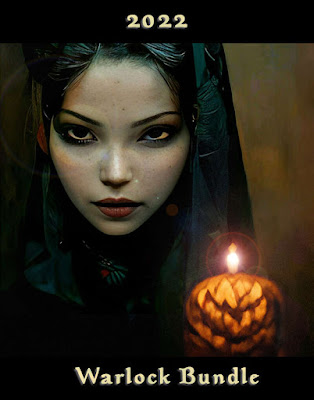
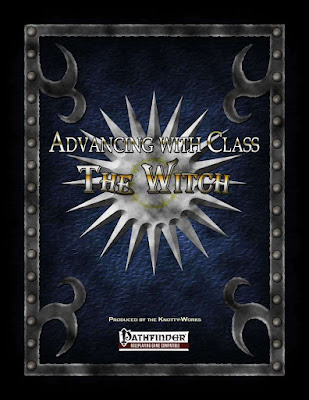

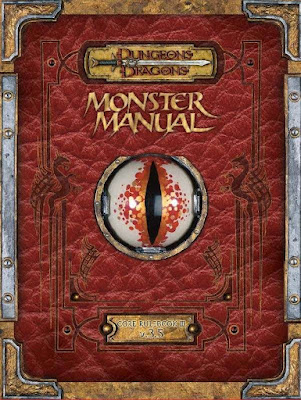








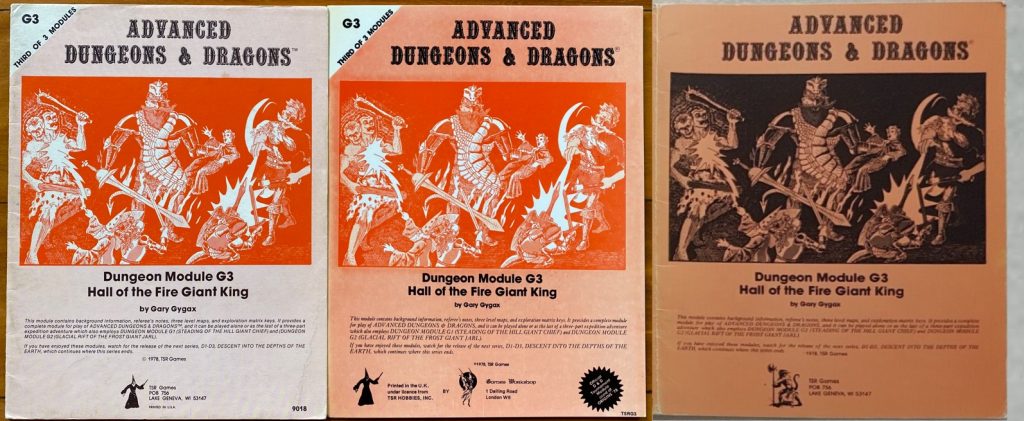 What’s New?
What’s New?
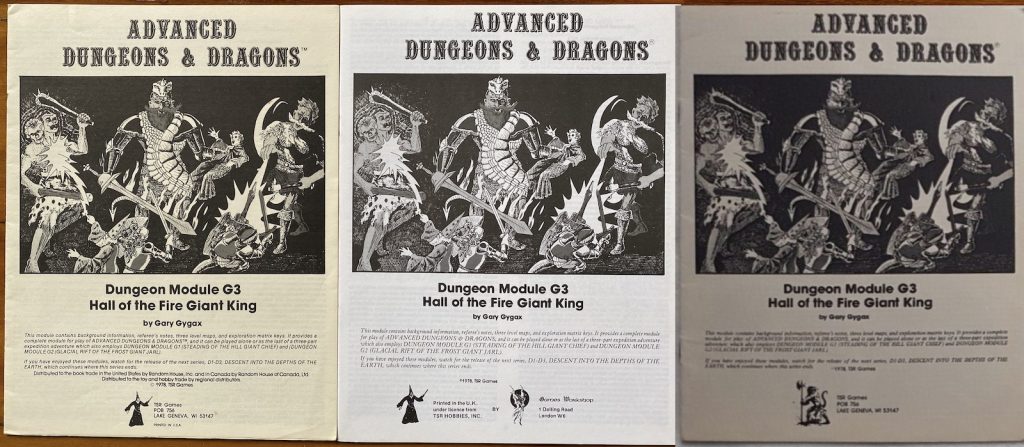 Art
Art
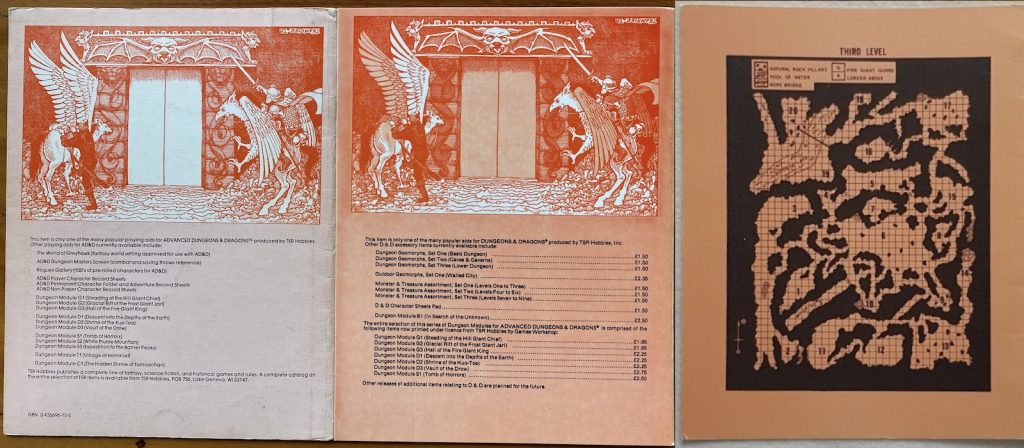 General
General
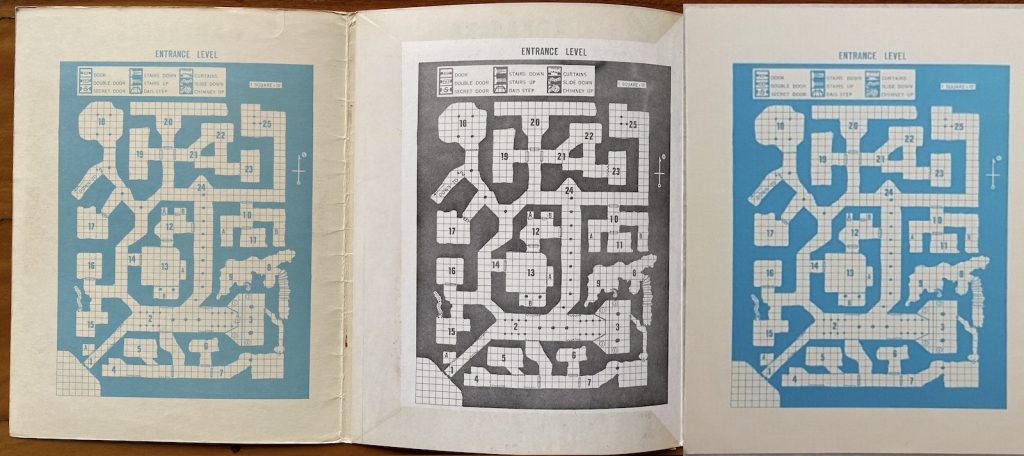 Image Information
Image Information



